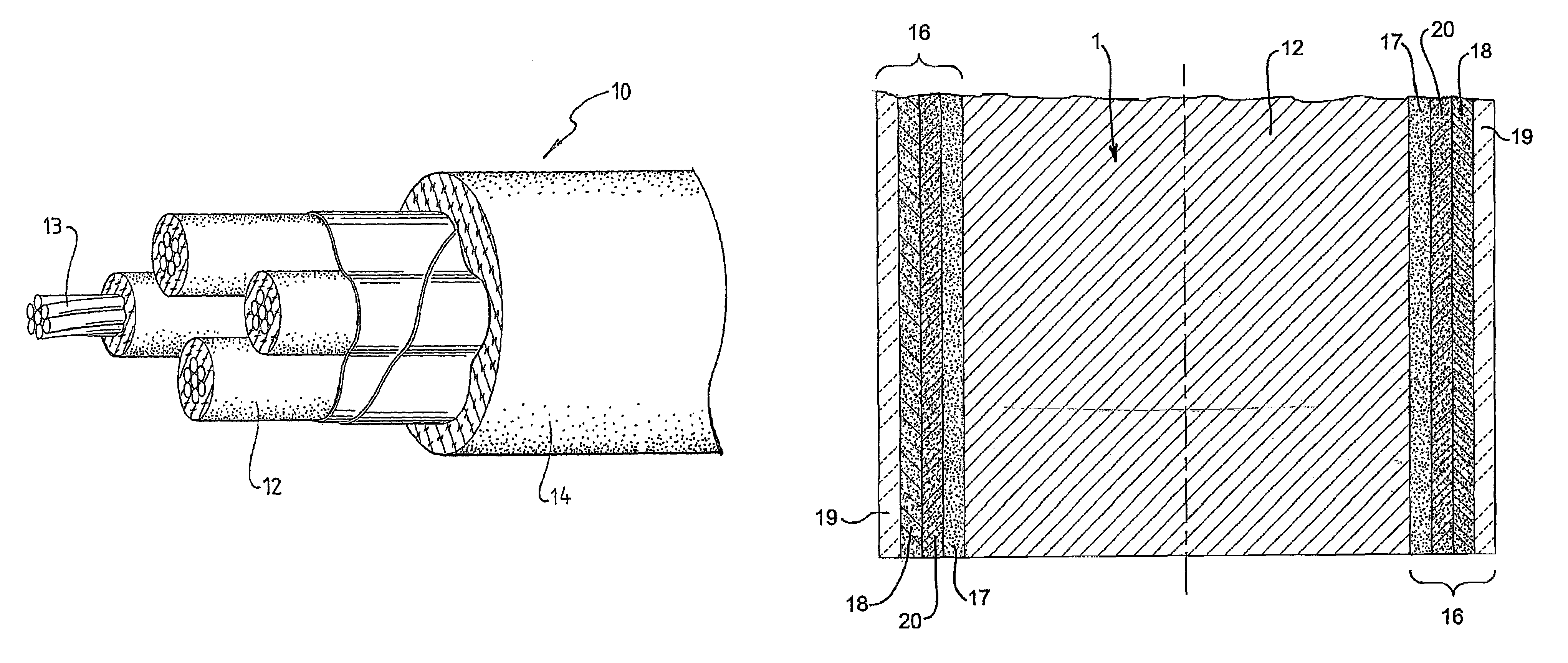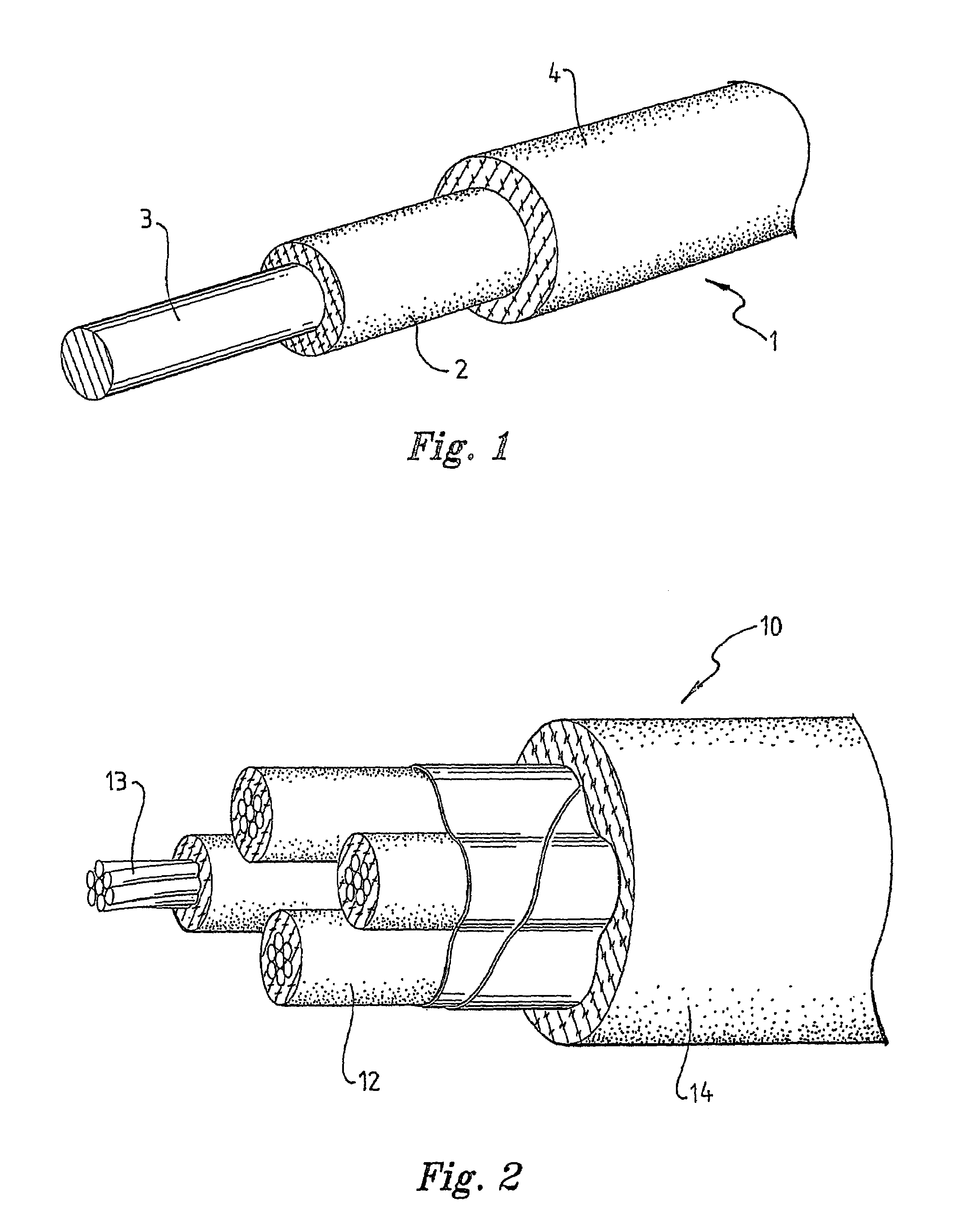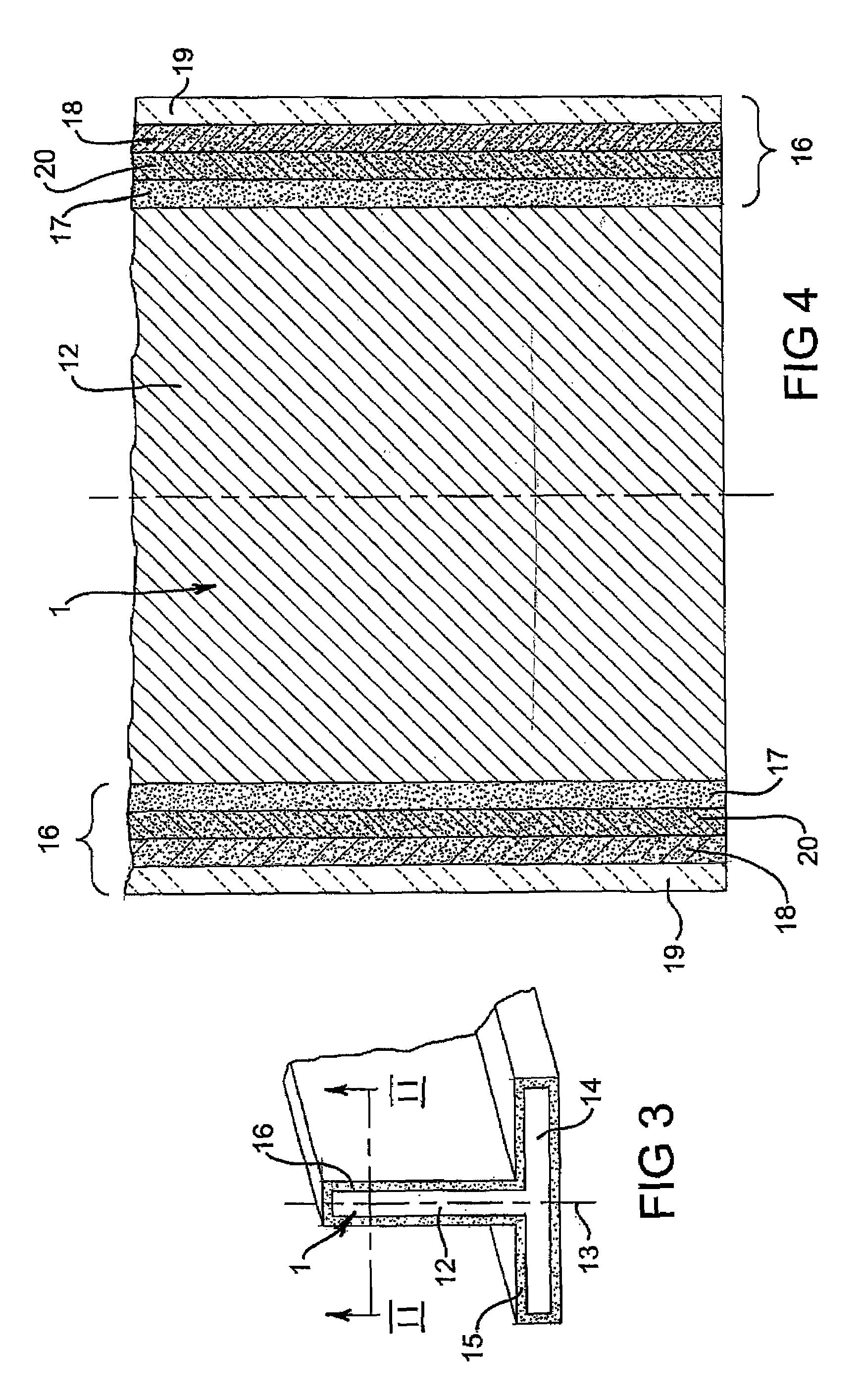Cable and article design for fire performance
a technology of cable and article, applied in the field of electric cables and articles, can solve the problems of increasing the cost of cable installation, slowing the overall production of cable, and difficult implementation of the practical application of these materials, especially in cable applications, and achieves the effect of improving the physical properties of the insulating ceramic forming layer
- Summary
- Abstract
- Description
- Claims
- Application Information
AI Technical Summary
Benefits of technology
Problems solved by technology
Method used
Image
Examples
example 2
[0112]Three 200 mm sections of 35 mm2 copper conductor were used to make different cable design prototypes. The extrudable compositions examined as sacrificial layers were Composition C (an ethylene propylene rubber heavily filled with predominantly aluminium hydroxide, and containing peroxide) and Composition D (a silicone polymer containing peroxide for thermally induced crosslinking). Composition E (silicone polymer / mica / glass fibre / peroxide 73:20:5:2), which forms a ceramic material when heated at elevated temperatures, was the outer layer in all three prototypes. The prototypes were prepared by simultaneously moulding and curing the composition(s) onto the cable sections. The designs and the layer thicknesses are shown in Table 1.
[0113]
TABLE 1Sacrificial LayerOuter Layer (CeramicCompositionforming layer) CompositionPrototype(thickness, mm)(Thickness, mm)1NilE(1)2CC(1)E(1)2DD(1)E(1)
[0114]All three prototype cables were then heated in a furnace to 1000° C. in air for 30 minutes. ...
example 3
[0119]A plain annealed copper stranded conductor made from 19 wires of 1.67 mm2 was electrically insulated simultaneously with a sacrificial layer based on EP polymer and a silicone elastomer based ceramic forming layer of composition E to an overall wall thickness of 1.2 mm. A similar cable was made with just the silicone elastomer based ceramic forming layer and without the sacrificial layer.
[0120]On firing these samples to 1,000° C., it was observed that a full coverage of the conductor was maintained in both cases.
[0121]However, as the samples cooled, the conductor in the sample that did not have a sacrificial layer began to disrupt the ceramic forming layer, due to interactions between the copper oxides of different valence.
[0122]This did not occur with the sample made with the sacrificial layer.
example 4
[0123]An EP polymer based composition was made with 62% of magnesium hydroxide for use as an inner sacrificial layer of high electrical resistance. The Mg(OH)2 was expected to convert to a powder of MgO on exposure to 1,000° C., leaving a powdery mass that did not ceramify.
[0124]Cable samples made with this material included 35 mm2 and 1.5 mm2 plain annealed copper conductors. Testing in a furnace at up to 1,050° C. resulted in the expected conversion of the Mg(OH)2 to MgO and a powdery layer over the conductor, held in place by the outer ceramic forming layer of composition J (given in Table 3). In comparison with other inner layer materials, this layer was found to provide higher electrical resistivity at 1,000° C. by a factor of 2.
PUM
| Property | Measurement | Unit |
|---|---|---|
| temperatures | aaaaa | aaaaa |
| temperature | aaaaa | aaaaa |
| temperature | aaaaa | aaaaa |
Abstract
Description
Claims
Application Information
 Login to View More
Login to View More - R&D
- Intellectual Property
- Life Sciences
- Materials
- Tech Scout
- Unparalleled Data Quality
- Higher Quality Content
- 60% Fewer Hallucinations
Browse by: Latest US Patents, China's latest patents, Technical Efficacy Thesaurus, Application Domain, Technology Topic, Popular Technical Reports.
© 2025 PatSnap. All rights reserved.Legal|Privacy policy|Modern Slavery Act Transparency Statement|Sitemap|About US| Contact US: help@patsnap.com



